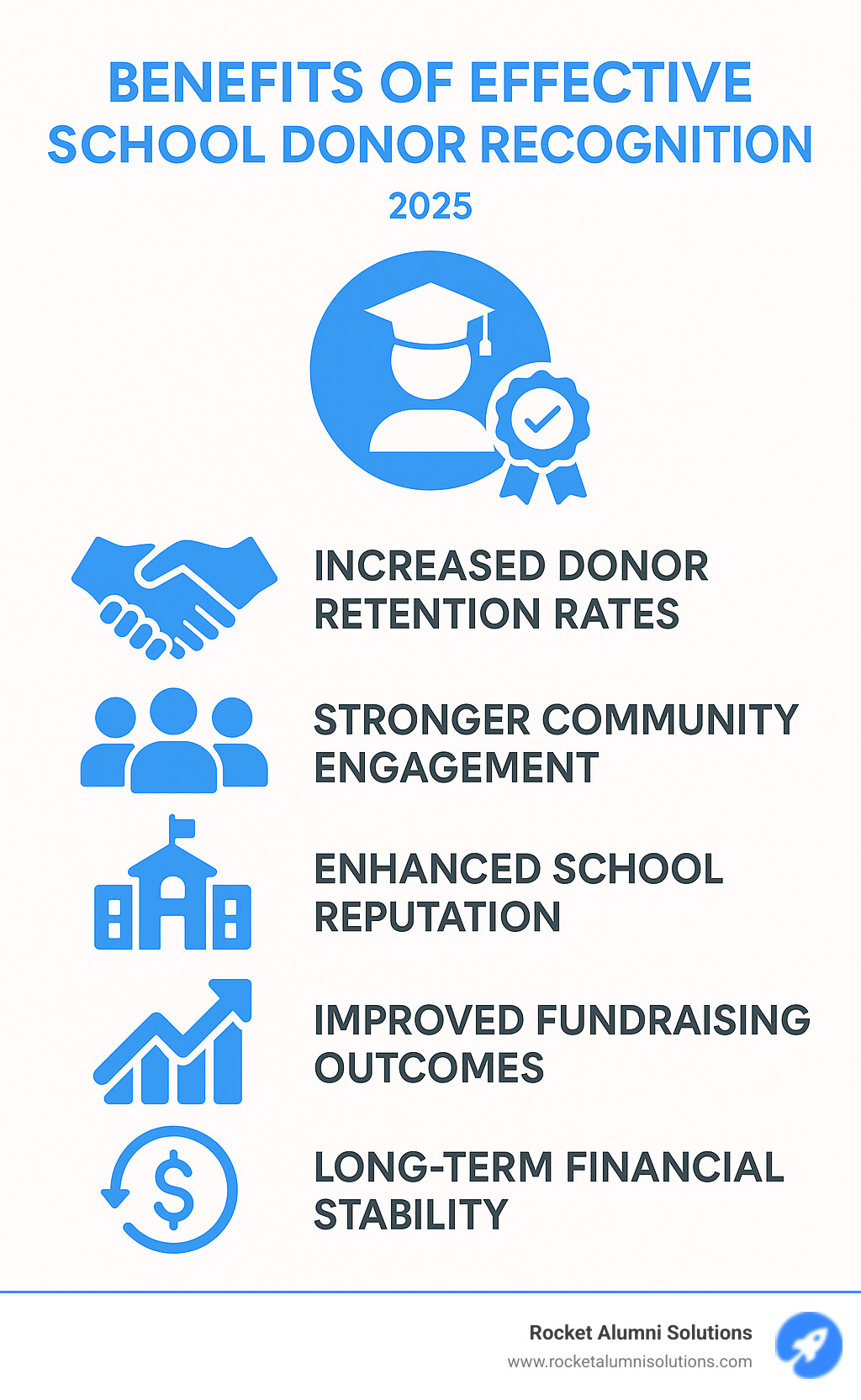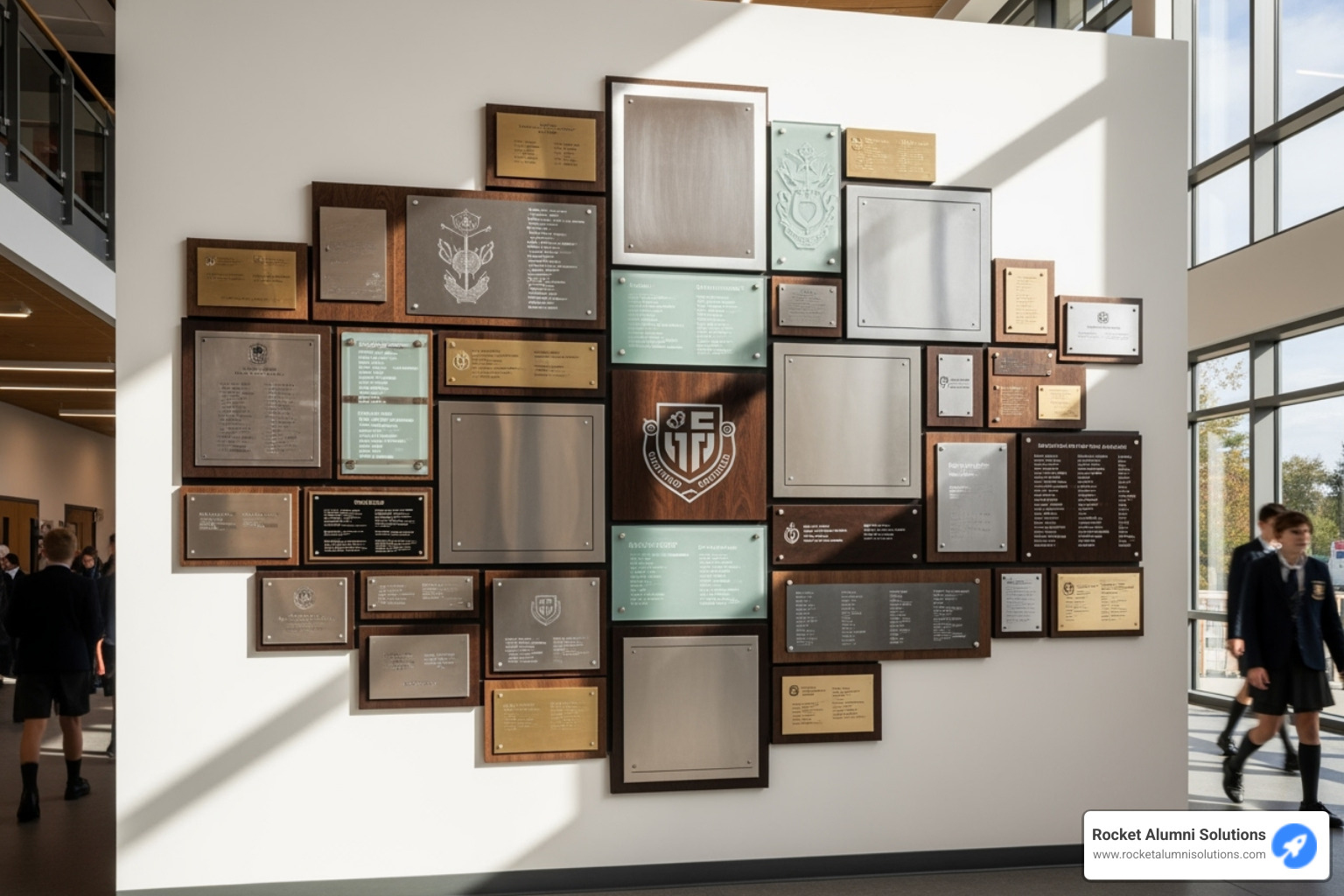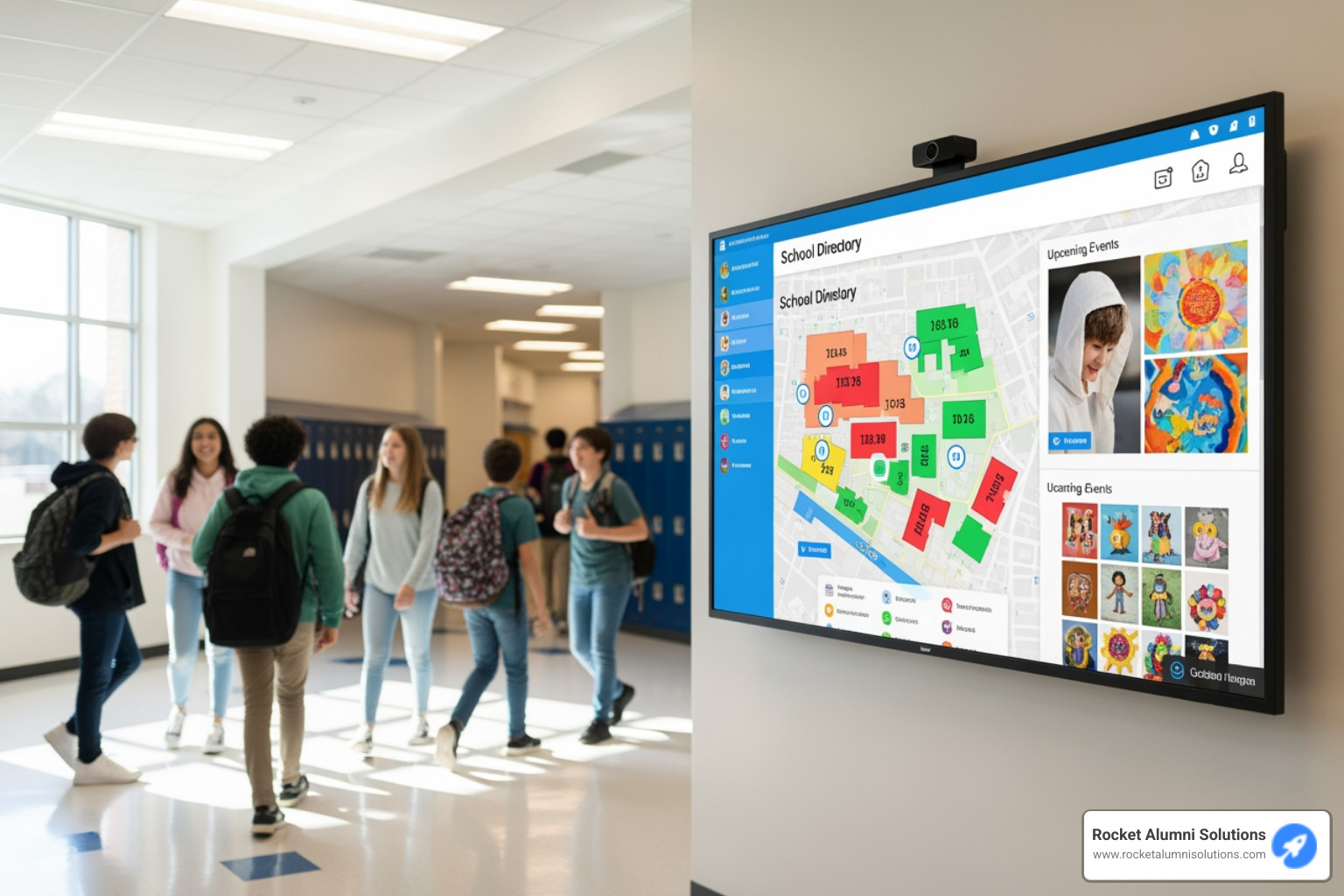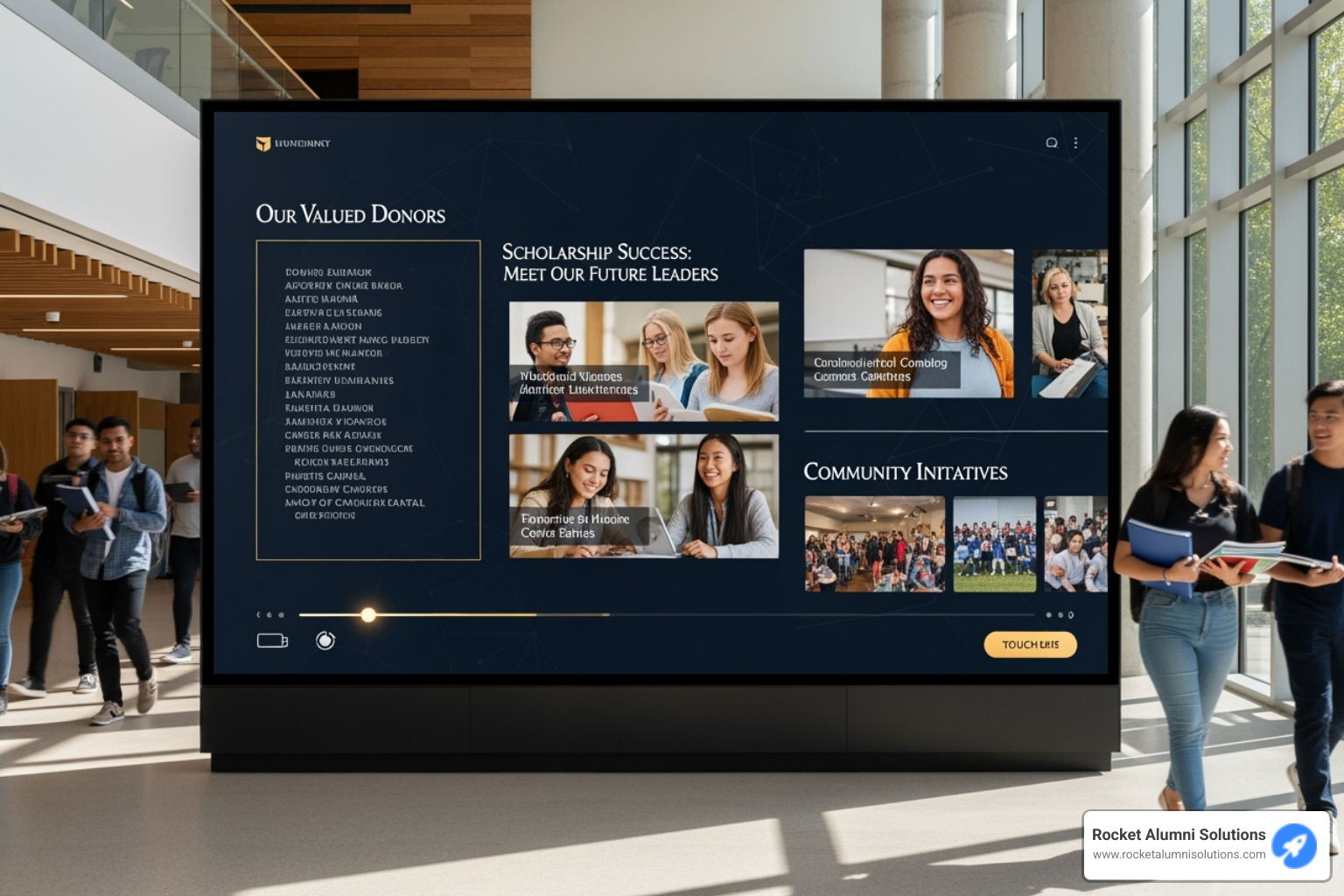Why School Donor Recognition Matters More Than Ever
School donor recognition encompasses the strategic methods and practices schools use to acknowledge, thank, and celebrate the individuals, families, and organizations that provide financial support to their educational mission. With state funding for public colleges declining by more than $9 billion over the past decade, effective donor recognition has become essential for schools to maintain financial stability and build lasting relationships with their supporters.
Key School Donor Recognition Methods:
- Personal Recognition: Handwritten thank-you notes, phone calls from leadership, private facility tours
- Public Recognition: Donor walls, social media spotlights, annual report listings, naming opportunities
- Digital Recognition: Interactive touchscreen displays, virtual donor walls, video testimonials
- Event-Based Recognition: Exclusive donor appreciation events, VIP experiences, award ceremonies
- Tiered Recognition: Giving societies with different benefits based on donation levels
The importance of donor recognition cannot be overstated. Research shows that lack of recognition is one of the top five reasons why donors choose to stop giving, while 41% of donors will give again when they receive personalized outreach about their gift's impact. For schools facing budget constraints and increased competition for philanthropic dollars, a well-designed recognition strategy can increase donor retention, encourage recurring giving, and inspire others to contribute.
Beyond financial benefits, effective recognition builds a stronger school community. When donors feel valued and see their impact celebrated, they become ambassadors for the school's mission. This creates a positive cycle where recognized donors often inspire others to give, fostering an atmosphere of gratitude and shared purpose that extends throughout the entire school community.
I'm Chase McKee, Founder & CEO of Rocket Alumni Solutions, where we've helped schools increase their repeat donations by over 25% through personalized recognition displays that make every contributor's story visible in real time. Having grown our company to $3M+ ARR by focusing on authentic school donor recognition solutions, I've seen how the right approach transforms one-time givers into lifelong supporters.

Why Donor Recognition is Crucial for Your School's Success
When schools face declining state funding—with public colleges losing over $9 billion in the past decade—school donor recognition becomes more than just good manners. It's a lifeline that keeps our educational missions alive and thriving.
Think about it this way: every donor who walks away because they felt unappreciated takes their future gifts with them. Research shows that lack of recognition ranks among the top reasons donors stop giving. That's not just disappointing—it's expensive. On the flip side, when donors receive personalized outreach showing how their gift made a difference, something beautiful happens: they want to give again.
The numbers tell an encouraging story. Schools that invest in thoughtful recognition see real results in donor retention and community engagement. When supporters feel valued, they don't just give once—they become part of your school's story for years to come.
The Impact on Donor Retention and Loyalty
Here's what we've learned from working with schools across the country: donors want to feel valued, not just processed. When someone makes their first gift to your school, you have a precious opportunity. Handle it well, and you might gain a lifelong supporter. Handle it poorly, and you've likely lost them forever.
Personalized stewardship transforms one-time givers into loyal champions. When donors receive impact reports showing exactly how their gift helped students, 41% choose to give again. That's not just a statistic—it's proof that gratitude works.
The magic happens in those first 48 hours after a gift arrives. A prompt, personal thank you sets the tone for everything that follows. Whether it's a handwritten note from a student whose scholarship they funded or a phone call from your head of school, these touches create emotional connections that last.
Recurring giving grows naturally when donors feel appreciated. They start to see themselves as partners in your mission rather than just check-writers. This sense of partnership leads to increased donor retention and often inspires them to encourage others to give too.
Great school donor recognition does something wonderful—it creates a ripple effect throughout your entire community. When donors see their contributions celebrated, they feel like they truly belong to something bigger than themselves.
Parent associations and alumni relations flourish when recognition is done right. That exclusive lunch with leadership or private tour of new facilities? These experiences transform supporters into ambassadors who share your school's story with genuine enthusiasm.
Your teachers and staff feel the impact too. When they see donor generosity recognized publicly, it boosts morale and reinforces that the whole community values education. There's something powerful about knowing that people care enough to invest in your students' futures.
Social proof plays a huge role here. When potential donors see others being celebrated for their generosity, it normalizes giving and creates an atmosphere of gratitude that's contagious. A well-designed donor wall or recognition display doesn't just thank past supporters—it inspires future ones.
This community building aspect of recognition strengthens your school's financial stability by creating a culture where giving feels natural and rewarding. When everyone feels connected to your shared mission, philanthropy becomes a joyful expression of that connection rather than just another fundraising ask.
Building an Effective School Donor Recognition Strategy
Creating a truly impactful school donor recognition strategy isn't something you can wing. It requires thoughtful planning that goes far beyond sending a quick thank-you note. Think of it as building a bridge between your school's mission and your supporters' hearts – one that gets stronger with every interaction.
The foundation of any successful recognition strategy rests on three pillars: strategic planning, solid donor data management, and the twin powers of promptness and personalization. When these elements work together, they create something magical – a system that makes every donor feel genuinely valued while building the kind of lasting relationships that sustain schools for generations.
Step 1: Segmenting Your Donors
Here's the thing about donors – they're all wonderfully different. Just like every student in your classroom has unique needs and learning styles, every donor has their own motivations, capacity, and preferred ways of being recognized. That's why treating all donors the same is like using a one-size-fits-all graduation cap – it might technically work, but it's not going to look great on everyone.

Smart donor segmentation starts with understanding who your supporters really are. Individuals make up your largest group – these are your parents, alumni, faculty, staff, and community friends who believe in your mission. Corporations often want to see their support tied to specific programs or events, while foundations typically focus on measurable outcomes and grant requirements. Alumni donors carry deep emotional connections to their school experience, and parents are investing not just in education but in their children's future.
The type of gift matters too. Monetary donations are straightforward, but in-kind contributions like equipment or services deserve special recognition that highlights their practical impact. Planned giving supporters – those legacy donors who include your school in their estate plans – are making the ultimate statement of faith in your institution's future.
Engagement level tells you where donors are in their relationship with your school. First-time donors need to feel welcomed and see immediate impact from their gift. Major donors require highly personalized, exclusive recognition that matches their significant investment. Consecutive-year donors have built a tradition of giving that deserves special acknowledgment, regardless of the amount.
Step 2: Creating Donor Recognition Levels and Tiers
Once you understand your donor segments, it's time to create a clear structure that shows supporters exactly where they fit and gives them a path forward. Think of donor recognition levels as a ladder of engagement – each rung offers specific benefits and recognition that match the donor's contribution level.
Many schools stick with traditional names like Bronze, Silver, Gold, and Platinum. These work fine, but they can feel a bit corporate and cold. The magic happens when you create giving societies with names that reflect your school's unique character and mission. A President's Club feels prestigious, while a Loyalty Society celebrates consistent giving over time.
Consider how different naming conventions can transform the donor experience. A traditional "Gold Level" donor might receive the same recognition as someone in the creatively named "Scholars' Circle" – but which one sounds more inspiring? Which one tells a story about your school's values?
Your recognition tiers should offer increasingly meaningful benefits as giving levels rise. Exclusive event invites work well for mid-level donors, while naming opportunities for classrooms, scholarships, or buildings provide lasting recognition for major contributors. The key is ensuring each tier feels valuable and distinct, creating natural stepping stones for donors to increase their involvement over time.
Step 3: The Power of a Prompt and Personal Thank You
Here's where the rubber meets the road in school donor recognition: the thank you itself. Speed matters enormously – follow the 48-hour rule whenever possible. A quick, heartfelt acknowledgment shows respect for the donor's generosity and keeps the positive feelings from their gift alive.
Handwritten notes remain incredibly powerful, especially when they come from students who benefit directly from the donation. There's something magical about a child's thank-you note that no email can replicate. Student involvement in recognition creates authentic connections that donors treasure.
Personalized emails that include specific details about how the gift will be used show donors you're paying attention. Instead of generic templates, craft messages that reference the donor's history with your school or connect their gift to specific programs they care about. Phone calls from leadership add another layer of personal touch that sets your school apart.
The goal isn't just to say thanks – it's to help donors feel the impact of their generosity. When you can show rather than just tell how their gift made a difference, you're building the foundation for a relationship that will benefit your school for years to come.

















































































































































































































































































































